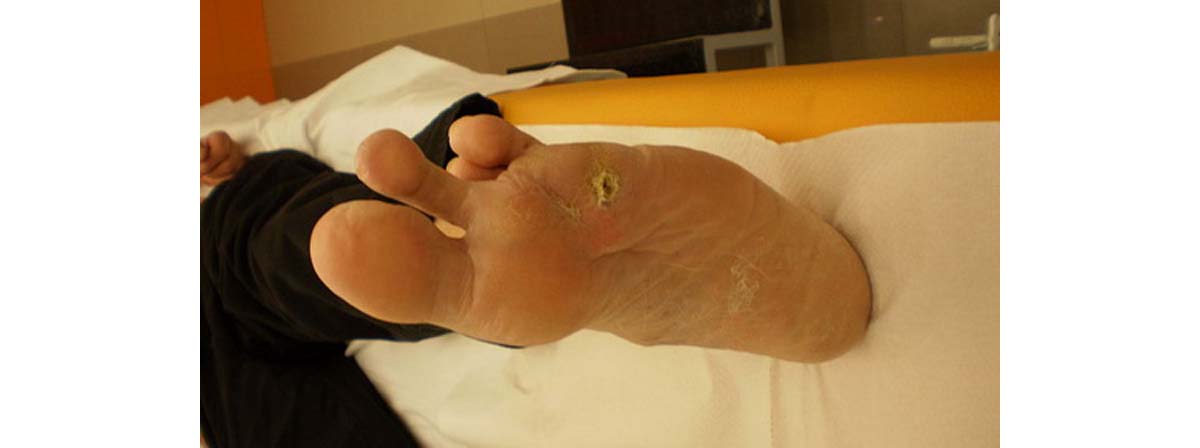Table of Contents
Most insurance plans in the USA pay for monthly debridement of diabetic wounds, typically billed at about $300 per visit. It typically takes 2 or 3 debridement sessions with the doctor of the podiatrist to treat a wound, but recent research has found that debridements are even more effective if they are scheduled once a week rather than once a month.

Recently, Dr. Robert Kirsner and his colleagues at Healogics, a company that runs a chain of wound treatment centers, examined the records of 155,000 diabetics who received treatment for 330,000 wounds at one of the company's 525 medical centers. They looked at the records of treatment for wounds caused by diabetes, by friction or pressure on the skin, and by accidents and other trauma.
The average wound was treated twice, 30 days apart, and took 76 days to heal. However, when wounds were treated weekly, they took an average of 21 days to heal. Wounds caused by accidents and trauma typically took about 1/3 less time to heal than wounds caused by friction, pressure, or diabetes complicaitons.
Since the same number of treatments is required whether the wound is debrided once a week or once a month, it seems to make sense to encourage weekly trips to the doctor so the wound heals right away, rather than monthly trips to the doctor that create greater risk of infection and complications.
Patients Also Get Credit for Wound Treatment Success
The doctors at Healogics believe that patients are more likely to follow their home care routine when they are treated once a week rather than once a month, so it is possible that it isn't just the additional treatment that is responsible for the faster healing time. The researchers note that shorter healing times mean less need for antibiotics, and lower risk of encouraging the development of antibiotic-resistant infections.
Don't Try to Treat Hard-to-Heal Foot Wounds On Your Own
If you have a diabetic wound, it's important to see a doctor rather than trying to treat it on your own. Because diabetics can break bones without feeling pain, the foot has to be x-rayed, at least initially, to make sure there are no infected bone fragments that have to be removed by the doctor.
Always Take All Prescribed Antibiotics
It's also imperative to take all of the antibiotics you are prescribed, even if your wound looks uninfected. Antibiotics kill up to 99.99% of bacteria very quickly, but there may be just a few bacteria that have a natural resistance to the medication and that take longer to kill. Stopping antibiotic treatment early can leave hard-to-treat bacteria behind and cause serious complications a few weeks to a few years later.
Let Your Doctor Fend Off Complications
It's also necessary to see a doctor to make sure wounds are not developing complications such as the red and painful condition on inflammation known as cellulitis and healing of the wound is not impeded by ill-fitting shoes or socks. It is always best to work with your doctor rather than against your doctor, and to get foot wounds of all kinds treated as soon as possible.
- Morbach S, Furchert H, Gröblinghoff U, Hoffmeier H, Kersten K, Klauke GT, et al. Long-Term Prognosis of Diabetic Foot Patients and Their Limbs: Amputation and death over the course of a decade. Diabetes Care. Jul 18 2012.
- Lebrun E, Kirsner RS. Frequent Debridement for Healing of Chronic Wounds. JAMA Dermatol. 2013 Jul 24. doi: 10.1001/jamadermatol.2013.4959.
- Photo courtesy of U.S. Navy photo by Culinary Specialist 2nd Class Michelle Pereira by Wikimedia Commons : commons.wikimedia.org/wiki/File:US_Navy_111104-N-PE811-001_Naval_Hospital_Jacksonville_diabetes_education_nurse_Nyve_Tinajero_checks_a_patien
- Photo courtesy of Intermedichbo by Wikimedia Commons : commons.wikimedia.org/wiki/File:Diabetic_Wound_after_HBOT.JPG


Your thoughts on this